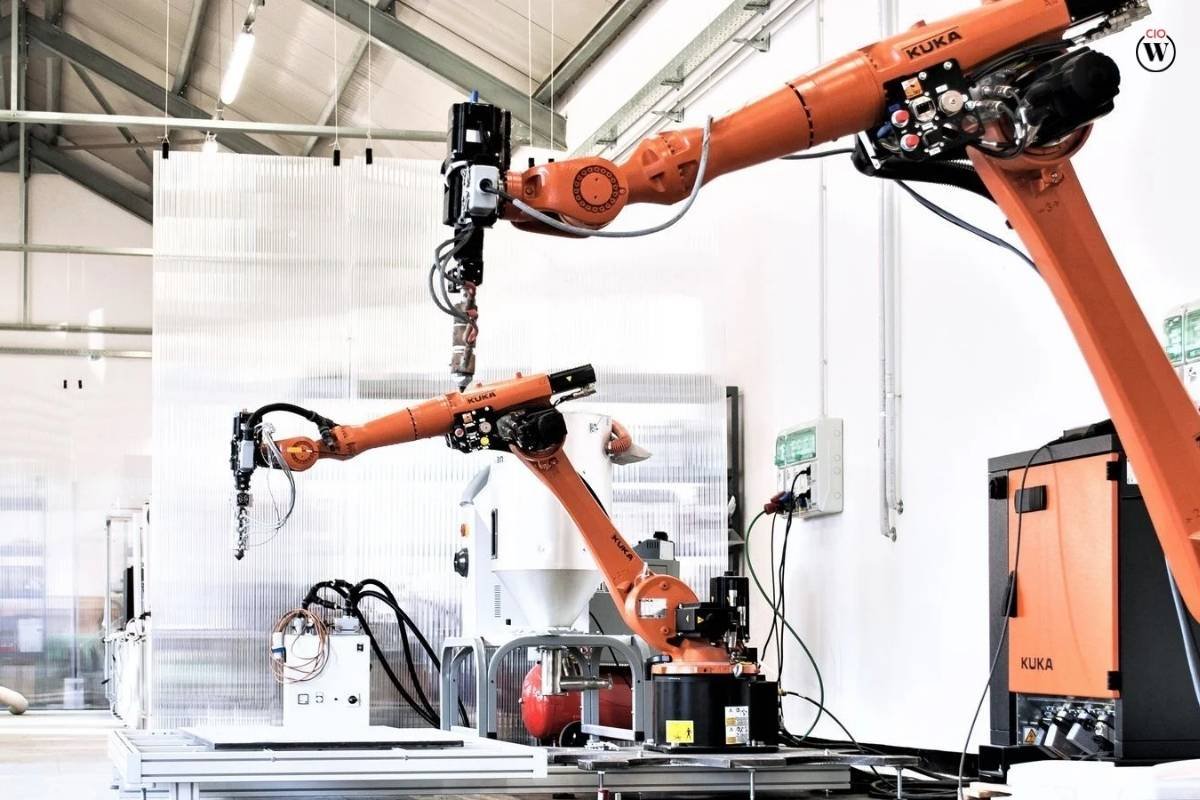In recent years, the construction industry has witnessed a revolutionary transformation with the integration of advanced technologies, and at the forefront of this change is the rapid rise of robotics. The use of Robotics in the construction industry is reshaping traditional methods, enhancing efficiency, improving safety, and paving the way for a more sustainable future. This article explores the various aspects of this transformative trend, highlighting the benefits, challenges, and profound impact it has on the construction landscape.
Robotics in Construction: A Game-Changer
The construction industry has historically been characterized by manual labor, heavy machinery, and time-consuming processes. However, the advent of robotics is changing this narrative. Robotics in the construction industry involves the application of automated systems, artificial intelligence, and cutting-edge technology to perform tasks traditionally carried out by human workers.
Robots are becoming increasingly prevalent in construction, taking on roles such as bricklaying, welding, excavation, and even 3D printing of entire structures. Robotics in the construction industry is central to this discussion as it encapsulates the essence of this technological revolution.
Types of Construction Robots
- Autonomous Construction Vehicles
One of the most visible manifestations of robotics in construction is the use of autonomous vehicles. These vehicles are equipped with sensors, cameras, and advanced navigation systems, allowing them to operate without human intervention. These robots play a crucial role in tasks such as site mapping, material transportation, and even excavation, making construction sites safer and more efficient.
- Robotic Bricklayers
Bricklaying, a traditionally labor-intensive task, is now being revolutionized by robotic technology. Robotic bricklayers can precisely lay bricks with speed and accuracy, significantly reducing construction time while maintaining high-quality standards. The integration of such robots aligns with the overarching goal of improving productivity in the construction sector.
- 3D Printing Robots

In recent years, 3D printing has gained prominence in construction, enabling the creation of complex structures layer by layer. 3D printing robots have the capacity to construct entire buildings with precision and speed. This technology is not only cost-effective but also facilitates the use of innovative and sustainable materials, emphasizing the environmental benefits of incorporating robotics in construction.
Advantages of Robotics in Construction
- Enhanced Efficiency
One of the primary advantages of introducing robotics into construction is the significant increase in efficiency. Robots can work tirelessly without breaks, leading to faster project completion. Robotics embodies this efficiency-driven transformation that is reshaping construction timelines and delivery.
- Improved Safety
Construction sites are inherently hazardous environments, with risks of accidents and injuries. By deploying robots to perform tasks that are dangerous for humans, the construction industry is mitigating safety concerns. Robots can handle tasks in precarious conditions, reducing the likelihood of accidents and enhancing overall job site safety.
- Precision and Accuracy

Robotic systems are programmed to perform tasks with unparalleled precision and accuracy. In tasks like bricklaying and welding, where precision is paramount, robots excel in delivering consistent results. Robotics in the construction industry encapsulates the precision that these automated systems bring to the construction process, ensuring a higher quality of workmanship.
- Cost-Effectiveness
While the initial investment in robotics technology may seem substantial, the long-term cost benefits are significant. Robots can work around the clock without the need for breaks, vacations, or benefits. Over time, this leads to reduced labor costs and increased cost-effectiveness in construction projects.
Challenges and Considerations
- Initial Costs and Implementation
The integration of robotics in construction comes with an initial cost, including the purchase of robotic systems, training for personnel, and system maintenance. However, as technology advances and becomes more mainstream, these costs are expected to decrease, making robotics more accessible to a broader range of construction companies.
- Adaptation and Workforce Concerns
The shift towards a more automated construction industry raises concerns about the displacement of human workers. While robots can handle repetitive and dangerous tasks, there will always be a need for skilled human labor in areas that require creativity, problem-solving, and complex decision-making. The industry must navigate the delicate balance between automation and maintaining a skilled workforce.
- Technological Limitations
As with any emerging technology, robotics in construction is not without its limitations. Robots may face challenges in adapting to dynamic and unpredictable environments. Weather conditions, unexpected obstacles, and complex decision-making are areas where human intuition and flexibility still surpass robotic capabilities.
The Future Landscape of Construction
- Sustainable Construction Practices
The integration of robotics in construction aligns with the growing emphasis on sustainability in the industry. 3D printing robots, for example, enable the use of eco-friendly materials and reduce waste. Additionally, the efficiency gains brought about by robotics contribute to minimizing the environmental impact of construction projects.
- Customization and Innovation
The future of construction will likely see increased customization and innovation, facilitated by robotics. With advancements in robotics and artificial intelligence, construction projects can be tailored to meet specific design requirements, allowing for more intricate and unique structures.
- Collaboration between Humans and Robots

The ideal future for the construction industry involves a harmonious collaboration between humans and robots. While robots handle repetitive and physically demanding tasks, human workers can focus on creativity, problem-solving, and complex decision-making. This synergy between human expertise and robotic efficiency is key to unlocking the full potential of the construction industry.
Conclusion
In conclusion, the rise of robotics in the construction industry represents a paradigm shift that is transforming the way we build. Robotics in the construction industry encapsulates the essence of this technological revolution, highlighting the integration of automated systems and artificial intelligence in construction processes.
While challenges exist, the benefits of enhanced efficiency, improved safety, precision, accuracy, and cost-effectiveness demonstrate the transformative potential of robotics in construction. As the industry continues to embrace these technologies, it is crucial to navigate the challenges wisely, ensuring a future where humans and robots collaborate to create a more sustainable, innovative, and efficient construction landscape. Robotics in the construction industry will undoubtedly remain at the forefront of discussions surrounding the future of construction.









